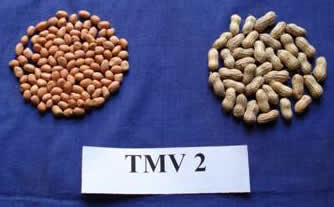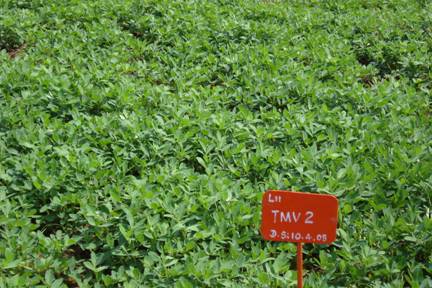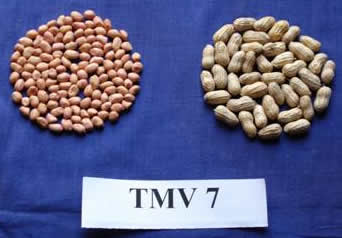CLIMATE AND VARIETIES
Groundnut is a tropical plant that requires a long, warm growing season. It can grow up to an elevation of 1160 m above sea level. A well-distributed rainfall of at least 50 cm during growing season, abundant sunshine and relatively warm temperatures are best suited for its cultivation. Temperatures between 21–26 °C are ideal for its growth and development. During the ripening stage, the plant requires about a month of warm and dry weather. Temperatures below 20 °C retard its development while those above 35 °C will adversely affect its flowering. Lower temperatures initially retard, and then prevent, growth: the plant is generally killed by frost at any stage. |
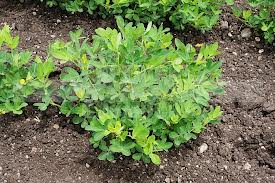 |
Growing season
Kharif (rainy/monsoon) – About 85% of groundnut grown in India is sown in the kharif season under rain-fed conditions. The time of sowing varies from June to November depending on the type of soil and rainfall.
Rabi (post rainy/winter) – About 10% of the crop is raised during the rabi season. The crop is usually grown in rice fallows from October–March. Summer season: In areas where irrigation is available or assured, the summer is ideal for groundnut cultivation. Good sunshine and high temperature favour pod formation.
Intercrops and crop rotation
Groundnut is usually grown as a mixed crop with pearl millet, maize, sorghum, castor and cotton. As a kharif crop, it is grown year after year. During the kharif season, it is a common practice among farmers to sow two lines of maize after every four lines of groundnut. Maize matures early and is hence harvested early. The furrows made after the maize is harvested are used to collect the rain water which is sprinkled on the adjoining four lines of groundnut. This practice facilitates easy harvesting.
In certain districts of Tamil Nadu, cowpea is intercropped with groundnut. Cowpea, being more succulent, attracts sucking pests and thereby reduces the damage to the groundnut crop. In certain places, groundnut is grown in rotation with wheat, jowar, bajra and garden crops such as chickpea, onions, chilies, garlic, ginger and turmeric. Groundnut fixes nitrogen in the soil. Hence the crop that is grown next to it will show a 25% increase in yield. More vegetative growth is observed in groundnut grown after cumin. In Andhra Pradesh and Maharashtra, sorghum is grown next to groundnut. When groundnut is sown as an irrigated crop, during the months of November and December, gingelly, Bengal gram and cowpea can be grown on the bunds. After 45 days, when weeding is done, cotton can be planted and gypsum applied to the field.
Within three months, the groundnut can be harvested along with the oil seeds and pulses. Cotton can be picked later. This practice reduces the costs of ploughing, formation of ridges and furrows, weeding and spraying. Moreover, farmers can take advantage of three harvests in a single season.
Soil
Groundnut is grown on a wide variety of soil types. However, a well-drained, light, loose, friable, sandy loam, well supplied with calcium and a moderate amount of organic matter, is ideal for its cultivation. A well-drained soil facilitates adequate exchanges of air to meet the nitrogen, carbon dioxide and oxygen requirements of the crop.
When oxygen supply to the soil is poor, root growth is impeded and metabolic functions retarded. In the absence of adequate oxygen in the root zone, the nitrogen-fixing bacteria are also ineffective and the roots are unable to take up soil nitrogen.
In loose, friable, sandy loams, germination of seeds and emergence of seedlings is better. Such soils facilitate easy penetration of the pegs and their development and make harvesting easy. Adequate calcium is essential in soils for the production of pods with sound matured kernels.
A moderate amount of organic matter (less than 2%) increases the water and nutrient holding capacity of the soil. Again, good yields are possible in soils with a pH between 6.0–6.5.
More than fertility, the texture of the soil is very important. Fine textured soils, heavy and stiff clays are avoided for the rain-fed crop as they cause difficulties in harvesting. Alkaline soils are undesirable. |
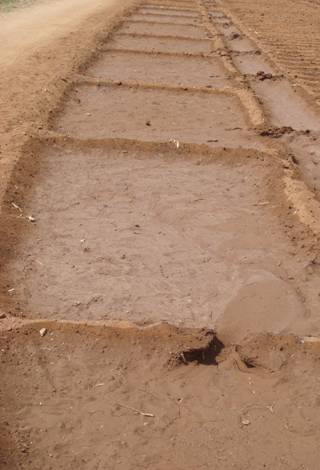 |
Crop duration
The duration of the crop is 90–105 days for bunch types and between 120–130 days for spreading and semi-spreading types.
VARIETIES
Groundnut breeding in India reached a sort of watershed in the eighties when 30 new varieties were released. Of the new cultivars, 80% were cross derivatives. During the period, stress was laid on resistance breeding. As a result, foliar disease resistance varieties like Girnar 1, ICGS 10 and ICGU 86590 were released. In groundnut, the varieties under cultivation fall under three botanical groups, viz., Spanish, Valencia and Virginia. The popular ones include JL 24, VR 1, VRI 2, VRI3, TMV2, TMV7, CO2 and BSR-1.
Source : Centre for Indian Knowledge Systems, Chennai
Updated on : Dec 2014 |



